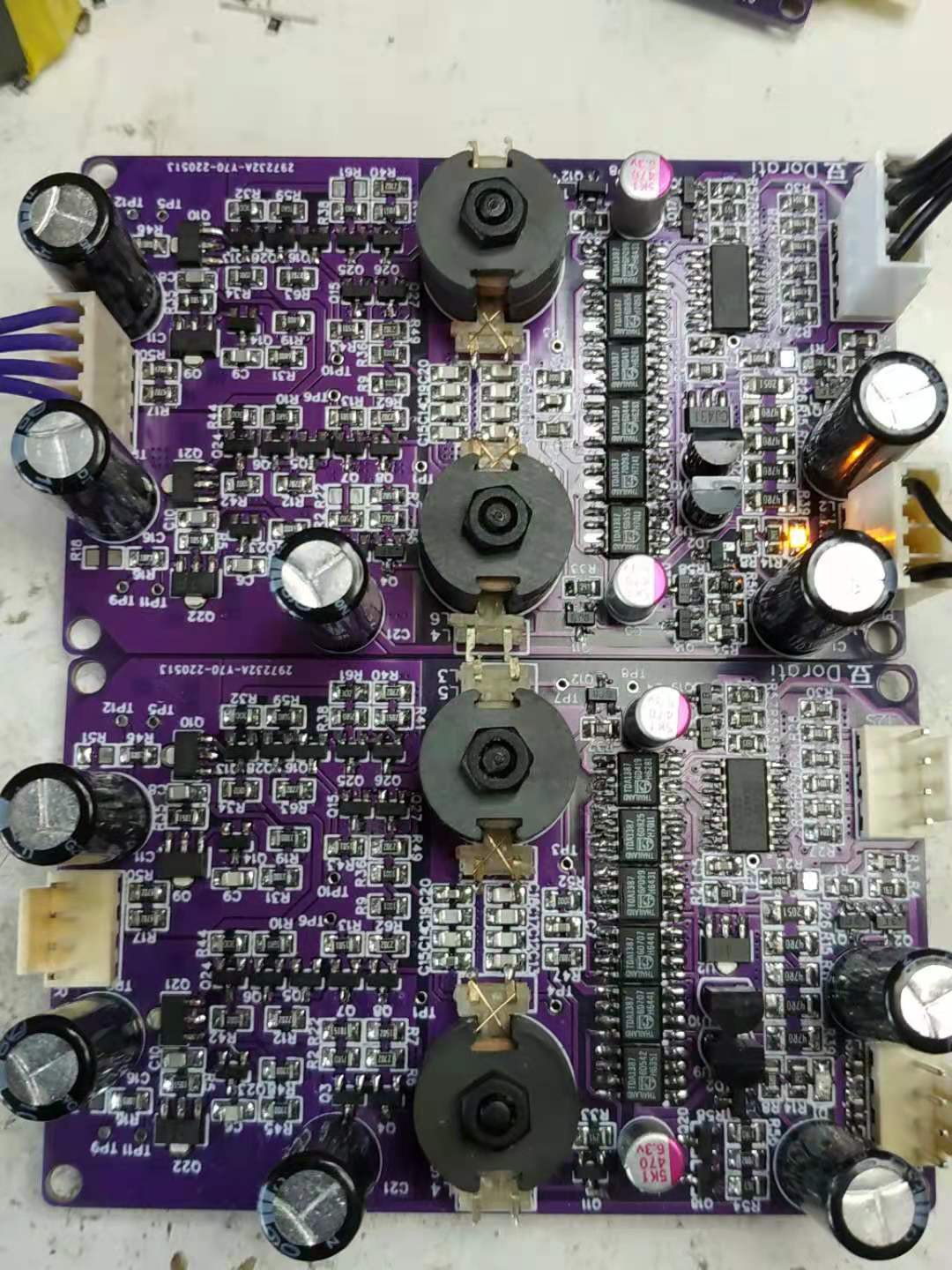Several dozen Kubelik kits have been sold now but when we came to re-stock some of the components for another batch we found the price of the opamps has gone up threefold. This is rather off-putting as they were the most expensive single item after the PCB and filter inductors. I became curious to discover how essential the opamps are in the scheme of things and whether a re-design to avoid them would have significant drawbacks. Certainly measurement-wise their application of lots of loop gain keeps the Sallen-Key unity gain buffer used for droop correction very low distortion. Experimenting shows sound quality does not suffer, its been clear for a few weeks now that if anything there's a subjective improvement from their elimination.
One customer managed to connect his Kubelik power supply backwards and, naturally enough his DAC died from that kind of abuse. As a result of helping him to get it going again I got him to remove the opamps and apply some wires to bypass them. He did eventually get sound out which says that everything but the opamps survived the polarity reversal. I can't help but think a DAC minus opamps would be more robust against simple DIY finger trouble.
Seeing as passive I/V (as mentioned in an earlier log) proved to be lower noise than active, it follows there's no need for the first stage opamp, just a unity gain buffer to 'stiffen up' the output. The SE OPS already employed acts as a unity gain buffer so why not just use that without opamp assistance? Yes there'll be second harmonic distortion but that is normally subjectively benign. Sallen-Key filters also can be built with emitter followers for the buffer stage so not a big deal. What's the challenge is - with DC coupling the voltage shift through two stages is a rather daunting 2.4V which might be a problem for managing signal headroom. The alternative would be AC coupling which would call for an extra pair of coupling caps between stages. The best cap is no cap so it was worth aiming for DC coupling to see what turned up.
Headroom is something to pay attention to, not just because of the DC shift. The LC filter has some peaking on its output, about 2dB according to simulation and this occurs at or near the corner frequency (~17kHz). So 25% extra swing is needed at the cascode MOSFET output. The final stage - the Sallen-Key filter used primarily for droop correction - is a major contributor to the noise due to the input resistors and the positive feedback at higher freqs. In simulation, above 10kHz or so the noise roughly doubles. The choice of Rs has the biggest impact on the noise, I wanted to use the lowest impedance commensurate with being able to drive the input without gobs of current demand in the preceding buffer stage. In the end I settled on 470ohm for Rs and this results in 32nF for the feedback cap, something achievable without too high a footprint penalty - two paralleled 0805 NP0s.
Having built up and listened to a couple of prototypes, I feel confident this new design comfortably beats its predecessor, though quite why I'm not totally clear on. The SNR of the post-DAC stages has gone up about 5dB but even on Kubelik the number was extremely low for a 16bit DAC - in the region of -124dB. Schematic to be posted up once component values have been finalized over a handful of builds.

Two of the earliest prototypes of Dorati, there's a difference in the resistor values in the S-K filter, just to explore whether that's audible.
 Richard Dudley
Richard Dudley
Discussions
Become a Hackaday.io Member
Create an account to leave a comment. Already have an account? Log In.